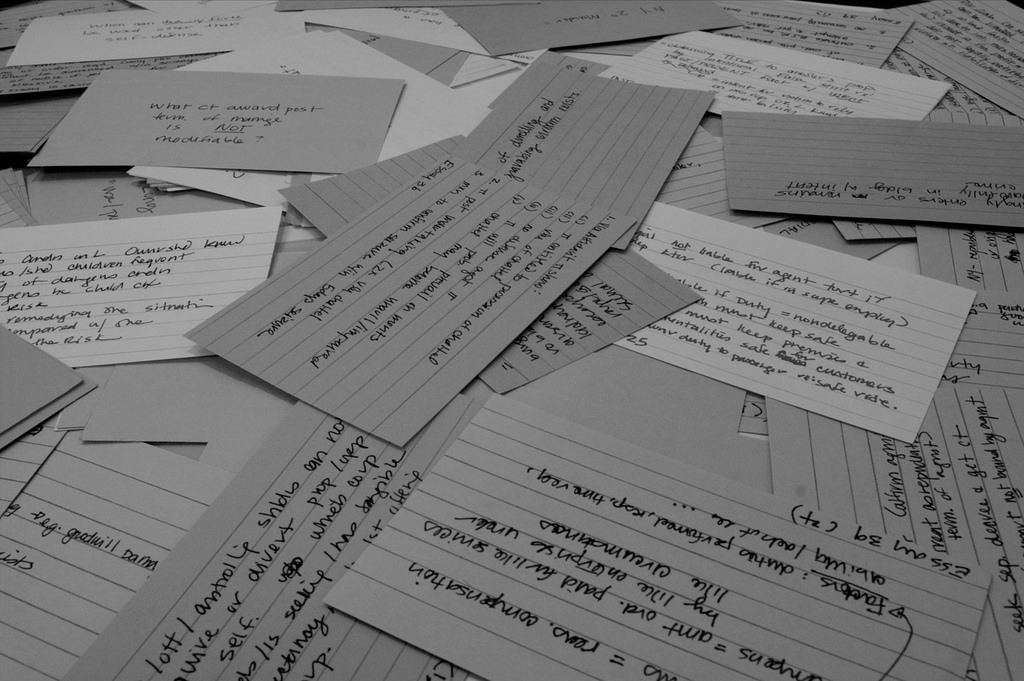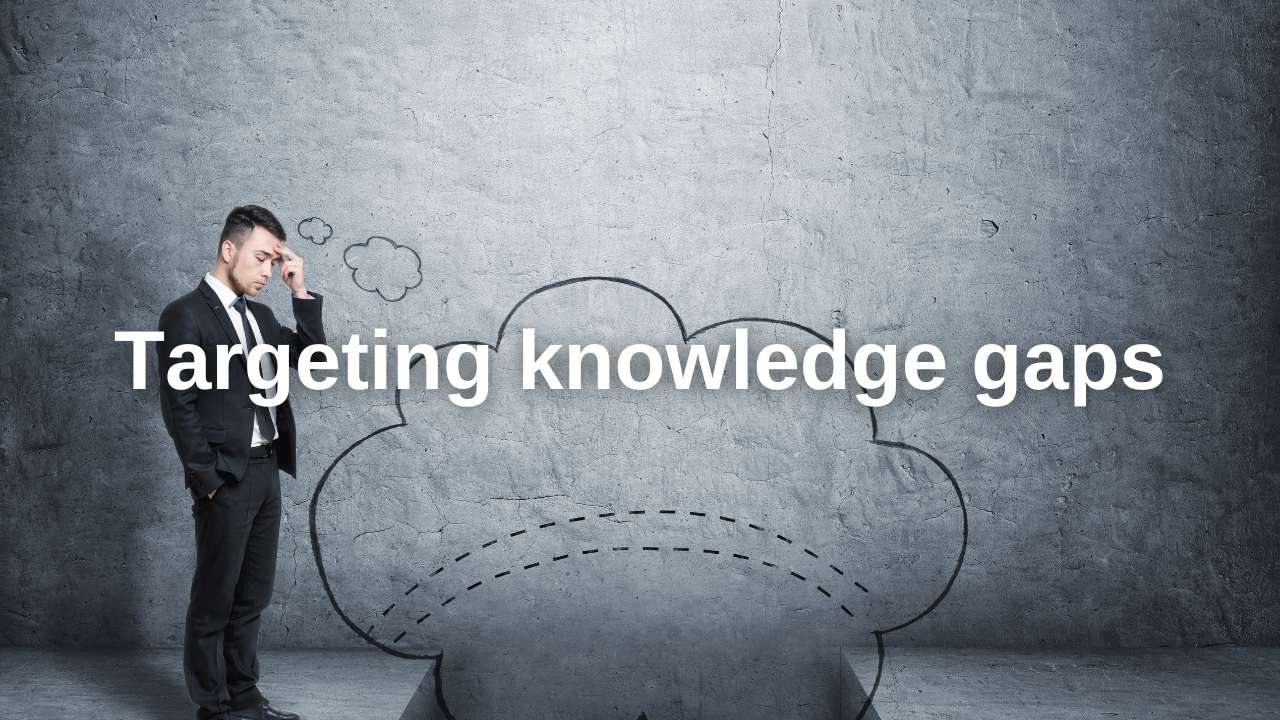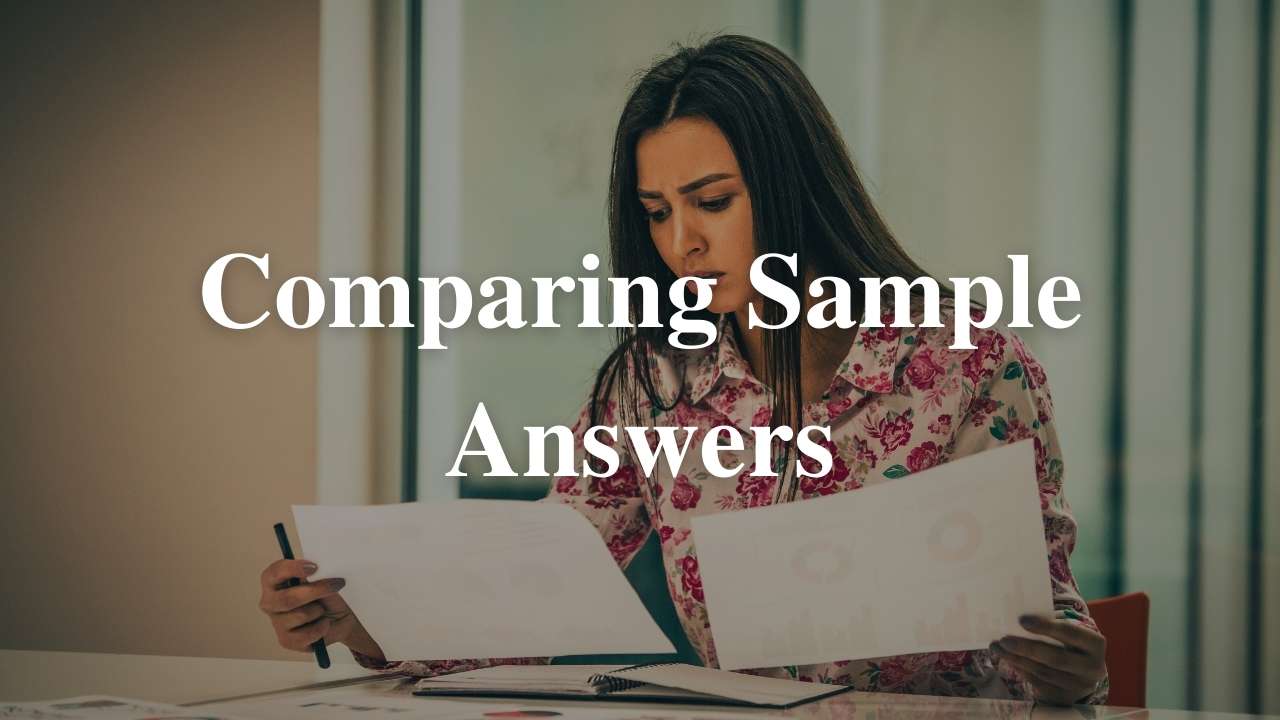Many students create flashcards, but only use them one (1) way – read the syllabus, recite the content, flip and check. Now, this is definitely the way most people use flashcards, and is a good starting place to using them. But I have 5 other ways for you to use your flashcards to further develop your study.
1. Turn them around
The easiest way to change up your use of flashcards is to turn them around. Start by reading the answer and see if you can match it to the right part of the syllabus. This is often the way I get students to start using their flashcards and then ham them progress to reading the syllabus and providing the content.
2. Categorise them
Another way to use your flashcards is to categorise them. Much like the old trick of cutting up the syllabus and putting it back together again like a jigsaw, you can use your flashcards by shuffling them, and then running through them and putting them into piles by module, critical question and dot points. This would be a great way to start with your flashcards that just have the syllabus on them and no content as well.
3. Give a speech
Using your flashcards as palm cards in a speech is a great way to further develop your understanding of the content. maybe hold a competition with some friends or as a class. Give each student a critical question or dot point and have them give a speech to everyone. They then need to field questions about the topic that are aimed to get as much information from the student as possible. Or you could just give the speech to your parents, or use the cards to teach your parents or a younger sibling everything about a particular topic. A great way to progress this further, is to then, stop using the flashcards, deliver a speech with no notes, or teach a friend with no notes, and then use the cards to help check if you covered everything you should have.
4. Mind-map them
Using your flashcards to make a mind-map on your wall or on a pin board is also another great way to study. Make sure your layers in the mind-map line up with the levels of content in your syllabus and use string to connect them. You can then easily run through your content, or the syllabus each morning and night to keep the information fresh in your head and build stronger neural pathways between the content.
5. Timed quiz
Playing a quiz game with a fellow PDHPE student is a great way to use your flashcards. Sit opposite each other, take a flashcard and turn it into a question for your partner, then set a timer and have them provide an answer to the question as quickly as possible, ensuring they include examples. Each good answer gets a point, work through a module and the person with the highest points wins. This should look a bit like a chess game, with a timer, but instead of moving a chess piece, you are answering a HSC PDHPE question.
Bonus – Create practice questions with answers
A bonus extra for you because you got to the bottom of this post. You could also create flashcards out of past papers and sample answers. To create the cards you put the question on one side, and all the key pieces of information from the sample answer on the other, including examples. This is a great way for you to practice past papers, without doing all the writing. This could save you time, but you also don’t get the writing practice.






